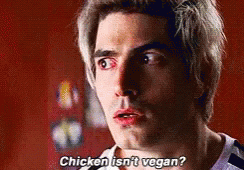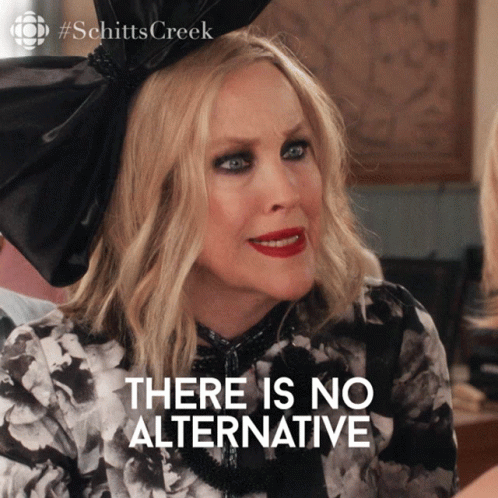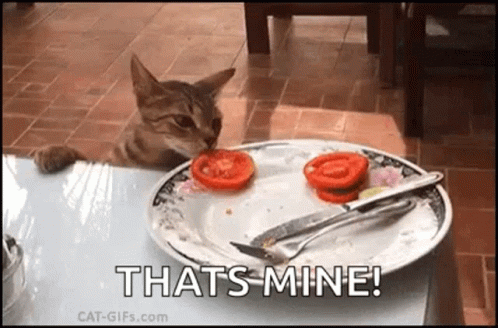Introduction
Hello, people! Crash and Edward felt like showing off their mischievous ways to me recently. Their victim was my pantry, but don’t worry. They embrace the I-don’t-know-what-you’re-talking-about look every time I catch them in the act of messing with my food. Wow, my cats are so original (sarcasm).
Like my pantry, I would like to share with you why reading vegan blogs can make you a hot mess. In the meantime, enjoy a bunch of pictures of Crash’s love for vegan food. If you need a refresher on what veganism is, check out this blog post.
As a side note, I do not support, disapprove of, or agree with any vegan blogs mentioned and/or linked in this blog post. Rather, this criticism focuses on why vegan blogs aren’t that accessible for vegan beginners and non-vegans, based on their vegan recipes.
- Broad ingredient list
- Non-vegan ingredients
- Vegan substitutes
- Strange ingredients
- Debatable definition of vegan
- Taste preferences
- Cuisines
- Food accessibility
- Cross-contamination
- Sounds too easy
- Hard to understand

1. Broad Ingredient List
Many ingredients are up to interpretation. Say you want to make vegan veggie sandwiches, and the recipe calls for a loaf of your favorite bread, some veggies, and a list of recommended condiments. The recipe forgot to mention how there are a lot of non-vegan loaves of bread (i.e., honey wheat) and that some of the recommended condiments aren’t normally vegan and would require vegan substitutes.
If you are interested in making vegan sandwiches, check out these vegan kinds of bread and condiment recipes.

2. Non-Vegan Ingredients
Numerous “vegan ingredients” aren’t vegan. Guess how many blogs have “vegan” recipes with regular, old sugar in them? The answer is a lot of them. I’m not sure if that’s because these bloggers assume everyone gets what sugars are and aren’t vegan or if they are ignorant of how cane sugar gets processed. Here is some information on sugar and vegan sugar brands.
Another great example of a common “vegan” ingredient is wine. I cringe every time someone wants to list wine in a recipe when many aren’t vegan. Since I don’t drink, I’m clueless about alcohol, but I am aware that some types of alcohol aren’t vegan. Check out this article on wine processing from Wine Enthusiast Magazine and a list of vegan wine brands.

3. Vegan Substitutes
Some recipes use vegan substitutes. Have you ever heard of vegan milk or vegan butter? Yay, labeling like this educates people on which ingredients aren’t traditionally vegan. However, there are two significant problems with the example’s labeling. The recipe doesn’t mention why milk and butter aren’t vegan (dairy) nor specify which brands and flavors are vegan.
For more information on vegan butter, check out this list of vegan butter brands and substitutes. If you want to try some vegan (nondairy) milk, read the milk labels carefully before buying them. Make sure it isn’t labeled lactose-free or organic milk because those milks contain dairy. Then, check for these unhealthy ingredients in store-bought nondairy milk, and see the top non-dairy milk alternatives and vegan milk brands.

4. Strange Ingredients
Many vegan recipes involve ingredients that are rarely used by non-vegans. Some common vegan ingredients include nooch, tofu, seitan, tempeh, quinoa, hummus, and tahini. If someone would have mentioned anything about these ingredients before I became vegan, I wouldn’t get what they were talking about. There’s nothing wrong with making recipes with these ingredients. Rather, it’s best to start making vegan recipes with ingredients that you already use or ones that are obviously vegan.
For more information on vegan food, here is a vegan grocery list. Just watch out for any cane sugar in the non-organic nondairy milks and dried fruits. Fortunately, a quick fix is organic cane sugar because it doesn’t get processed in gelatin.

5. Debatable Definition of Vegan
There are too many types of vegan diets and lifestyles. One vegan blogger may believe honey is vegan. Another may eat a gluten-free, soy-free, or a vegan diet that lacks both gluten and soy, and a third may be a junk food giant who claims all of these foods are vegan.
I believe honey isn’t vegan. I eat gluten and soy, and I disagree with most of the acclaimed vegan foods, like Oreo cookies. If you are interested in trying vegan junk food, check out blog posts or articles like this one that have healthier junk food options.
There’s nothing wrong with having a lot of different types of vegans out there. The issue is how do you expect non-vegans to understand what veganism is when everyone has a different definition on what veganism is?
Instead of reading vegan blogs for all of your information on veganism, ask your vegan family/friends if they can give more specifics on what they eat, like if they eat nut-free. Then, check out One Green Planet and their associated app called Food Monster. This is a great resource for vegan recipes because their recipes are sorted out with allergy-free options, cuisines, and various food themes.

6. Taste Preferences
Just because it’s a vegan recipe doesn’t mean your vegan family/friends will like it. How many of you like every single food on the planet? Unless you’re dying of hunger or have no taste buds, the answer is no one. The same logic applies to your vegan friends/family. Even though a vegan blogger raves about the best vegan shepherd’s pie ever, that doesn’t make it the best vegan-food option for your friends/family.
The perfect example for me is I dislike most condiments. Most of the condiments that I like are things that I would dip tortilla chips into, instead of cooking or topping my food with them. The main exceptions are tomato and soy sauces.
That means I don’t eat or like any vegan cold salads because most contain condiments, like coleslaw.

7. Cuisines
Some cuisines are easier to make vegan than others. Have you ever encountered peppy vegans or elsewhere who claim it’s so easy to make vegan dishes and alternatives from any recipe? Unfortunately, they’re wrong. For some external resources, here’s a vegan cuisine guide and a blogger’s opinion on which cuisines are the easiest to the hardest to eat as a vegan.
Some examples that I’ve run into are the following. It is pretty easy to find vegan Indian recipes online while it’s harder to make vegan Mexican, Japanese, Italian, and breakfast recipes, let alone find these vegan options in restaurants.

8. Food Accessibility
Many vegan main brands aren’t accessible to everyone. Have you ever heard of Daiya, Beyond Meat, or Hilary’s? If you have a Trader Joe’s, a Natural Grocers, a local co-op, or a bigger vegan-friendly grocery store near you, it’ll be easy to find many vegan main brands. Good luck finding any vegan-friendly brands in smaller towns, cities, and food deserts.
In my town, the only vegan-friendly brands I can recall on the top of my head are meat substitutes from MorningStar Farms and Gardein, some vegan “milks” like Silk, Daiya Cheezy Mac, one flavor of Enjoy Life chocolate chips, Sabra hummus, and Clif Bars. Since my small town lacks a health-foods store, less and less vegan options maintain their shelf lives in the long-term. If I want more vegan options, I would have to drive a least an hour away to buy them.

9. Cross-Contamination
Cross-contamination is an issue that many vegans deal with regularly. One major issue that I’ve run into as a vegan is cross-contamination, which means vegan food has contact with animal products in some way. The perfect example is French fries at most restaurants. The French fries’ ingredients may be completely vegan at first, but due to being cooked in the same oil and/or fryer as chicken strips, shrimp, cheese sticks, etc., the French fries aren’t vegan anymore.
If you strive to avoid cross-contamination, here are some tips for you.
- Serve all vegan dishes in separate spots from your non-vegan dishes.
- Use different-looking utensils for vegan food and non-vegan food, so there is no confusion on which utensil goes to which dish (like plastic for vegan and wooden for non-vegan).
- If you are cooking vegan and non-vegan recipes, make the vegan recipes first before any cross-contamination can happen.
- Buy new pots, pans, bowls, grill racks, cooking utensils, and whatever else you like making food with, and only use these new kitchen gadgets with your vegan food.
- Separate the non-vegan and vegan foods into different parts of the refrigerator, freezer, and pantry.
- Clean your kitchen thoroughly before you make vegan food.
- If you are tight on space, have your vegan relatives/friends lead the meal lines.

10. Sounds Too Easy
Vegan bloggers tend to act like veganism is super easy. When I look at vegan bloggers’ bios and experiences, I imagine cute vegan families with 100% vegan holiday gatherings and their classic go-to party favorites when they go to places with sparse vegan options. That’s probably not what their experiences are like, but that’s how I feel when I read many vegan blogs.
For example, I’ve seen several blog posts that are like this relative made the best dish ever growing up, and voilà, here’s the vegan version of this recipe for you to try at home. If these bloggers made these recipes correctly the first time, then congratulations to them, but for everyone else, they’re a lot of struggle involved to make the simplest recipe vegan-friendly from scratch.
Some obstacles include not using the correct vegan substitutes, ridicule from non-vegan family/friends on why you would ever make a perfectly good vegan recipe, and thinking non-vegan foods are vegan.

11. Hard to Understand
Vegan blogs are difficult for non-vegans and vegan beginners to understand. Many vegan bloggers strive to target vegan cooks. That means these bloggers may assume that everyone who’s reading their recipes knows what veganism is, so they don’t have to elaborate on vegan jargon. They have valid logic, but there are many people out there that look up what veganism is after hearing about it.
Since I’m not a human encyclopedia, I can’t give you all the answers to your vegan-related questions, but here are some great places to get more information about veganism.
- Get a more specific and official definition of veganism from a company that specializes in vegan certification.
- Check out these vegan celebrities that you may recognize, and try out their favorite vegan dishes (if these recipes don’t cost you limbs of course).
- Discover which brands you love with a certified vegan logo on their vegan products.
- If you have any vegan family/friends, ask them for more information about veganism.
Conclusion
As you can see by my gazillion pictures of my cats, I have no social life, and Crash is bound to gain a lot of weight off of eating his vegetables.
Whatever, I’ll let you know when society stops considering single female cat owners as cat ladies, but until that unlikely day comes, here are the 11 reasons why I find many vegan blogs unreliable for non-vegans and vegan beginners to use.
- Many ingredients are up to interpretation.
- Numerous “vegan ingredients” aren’t vegan.
- Some recipes use vegan substitutes.
- Many vegan recipes involve ingredients that are rarely used by non-vegans.
- There are too many types of vegan diets and lifestyles.
- Just because it’s a vegan recipe, that doesn’t mean your vegan family/friends will like it.
- Some cuisines are easier to make vegan than others.
- Many vegan main brands aren’t accessible to everyone.
- Cross-contamination is an issue that many vegans deal with regularly.
- Vegan bloggers tend to act like veganism is super easy.
- Vegan blogs are hard for non-vegans and vegan beginners to understand.

